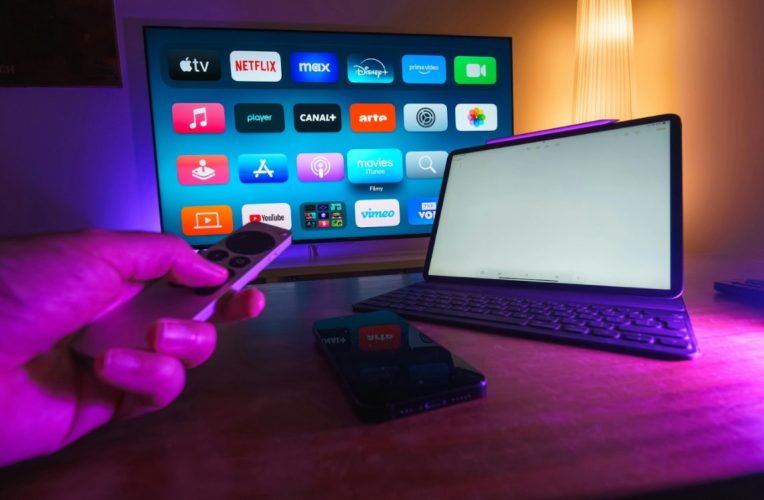The landscape of digital entertainment in Europe is experiencing a remarkable change. This change is influenced by technological advancements, shifting customer tastes, regulatory changes, and globalization at the forefront.

With an increasingly connected population, Europe is embracing new forms of entertainment beyond traditional slots of online pastimes. The rise of streaming services, online gaming, and immersive techs like augmented and virtual reality redefined how Europeans engage with content. Likewise, this engaging digital entertainment scene redesigns the continent’s cultural and economic fabric. Keep reading to see how!
The Streaming Revolution
Over the past decade, the surge of video-on-demand (VoD) services has basically changed how Europeans consume content. Conventional TV viewership has reduced steadily, giving way to platforms like Netflix, Amazon, Prime Video, and Disney+. Local providers like BritBix (UK), Salto (France), Joyn (Germany), and Viaplay (Nordic countries) are equally given room to shine.
Additionally, the European Union necessitates that at least 30% of the content in streaming platforms must be European in origin. This policy aims to preserve cultural identity and support local creators. Likewise, it influences global giants to invest in European content production.
Online Gaming & eSports
The European video game market is one of the largest globally. In 2024, its revenues were recorded to have exceeded €24 billion. This transformation from console-based gaming to cloud gaming and mobile platforms has expanded access across geographies and demographics. Some notable trends that have made this possible are mobile gaming, cloud gaming, in-game purchases, and NFTs.
Furthermore, Europe has become a hub for competitive gaming. It has hosted major tournaments in cities like Katowice, Copenhagen, and Berlin. With games like League of Legends, Counter-Strike, and FIFA dominating the scene, professional players and teams keep enjoying celebrity status. In addition, government and private investors are increasingly backing eSports after identifying its economic and cultural importance. For instance, France included eSports in its 2024 Olympic cultural programming.
Digital Concerns & Music Streaming
Founded in Sweden, Spotify remains the leader in Europe’s music streaming market. Even though it faces huge competition from Apple Music, Deezer (France), and YouTube Music, it maintains its position. Also, Subscription models, free ad-supported options, and curated playlists have changed listening habits.
Furthermore, the pandemic spooked the surge of virtual concerts and the trend has continued since. Artists are now performing in digital spaces like Fortnite or Decentralized. The goal is to reach global audiences with little to no geographical constraints. Hence, Europe’s music festivals like Sziget and Tomorrowland have experimented with hybrid and digital formats. Therefore, merging physical presence with online interactivity.
Immersive Technologies
Augmented Reality and Virtual Reality technologies are moving from niche to mainstream. Applications range from education to gaming and real estate. Europe hosts a vibrant ecosystem of AR and VR startups, especially in locations like Barcelona, Amsterdam, and Berlin. The EU invests heavily through Horizon Europe to support research in extended reality (XR).
European companies are equally contributing to metaverse platforms. However, concerns over monopolization, privacy, and digital sovereignty look large. Hence, regulators are keen to ensure that European values are preserved in these emerging spaces.
Podcasts & Audiobooks

Podcasts have become a major part of digital media consumption. Topics range from news and politics to true crime and comedy. Countries like Sweden, Germany, and the Netherlands lead in podcast penetration. The European audiobook market is growing rapidly. This growth is driven by younger audiences and commuters. Nordic countries record high subscription rates, with platforms like Bookbeat and Storytel dominating the scene.
User-Generated Content & Social Media
Short-firm video platforms are revolutionizing content creation and consumption. YouTube Shorts, TikTok, and Instagram Reels are famous among millennials and Gen Z, both content creators and viewers. This has given prominence to a new class of digital entertainers and influencers. A lot of these demographics are both content creators and viewers. This has given a surge to a new class of digital entertainers and influencers. A lot of them monetize their content through merchandise, sponsorships, and fan subscriptions.
Additionally, Europe’s linguistic diversity presents both challenges and opportunities. Localization, subtitles, and dubbing are crucial for cross-border success. Hence, some platforms are developing region-specific algorithms to better cater to local preferences.
Regional Distinctions & Tastes
Northern and Western Europe generally have higher digital penetration and infrastructure quality. Consumers in countries like Sweden, Denmark, and the Netherlands are early adopters of new technologies and subscription models. On the contrary, the Southern and Eastern regions are catching up. In these parts, there is a stronger taste for free or ad-supported models. Mobile-first consumption is more rampant, and local content is highly valued. What’s more? Government and EU-backed digital programs are helping to close the gap.
A Dynamic Phase of Evolution
Digital entertainment in Europe is in a transformative phase characterized by innovation, regional diversity, and cultural richness. Despite the challenges around regulation, fragmentation and digital equity persist, making the content well-positioned to lead in creating accessible, inclusive, and engaging digital experiences.
Europe’s digital entertainment ecosystem reflects the legacy of a culturally vibrant past and the promise of a technologically sophisticated future. So, as audiences grow more connected and content becomes extra interactive, Europe’s digital entertainment landscape will keep expanding, adapting, and inspiring.
